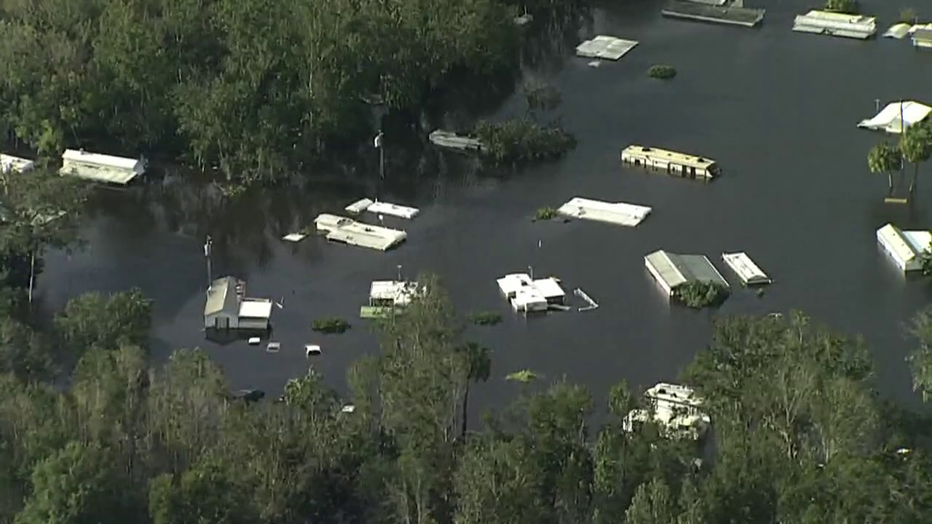Flooding after Hurricane Ian could have moved 152 non-native species to new areas in Florida, study finds
TAMPA, Fla. - The United States Geological Survey is compiling data into a map that shows the potential spread of invasive and non-native species after major flood events, like hurricanes.
"Where that is on the landscape and where you’d expect to see some of the populations of non-native species, that can be plants and animals, and then highlight the ones that we think are most impactful based on their effects on the environment and the economy and human health," said Ian Pfingsten, a botanist for the USGS.
Various species can move from one area to another when there’s flooding.
Flooding in Florida after Hurricane Ian could have moved 152 non-native species to new locations in the state with 63 of those known to be invasive species. This could have long-term detrimental impacts that could take a while to notice.

"Long time spans of generations of these organisms creating impacts to infrastructure, to navigation, to the ability to recreate in your water bodies," Pfingsten said.
That’s why the USGS says it’s crucial to stay on top of where non-native species move around after flood events. It can impact commerce, infrastructure, recreation and even property value.
"If you start to see these species pop up in an area where you just never noticed them before, you may think, ‘oh, that’s kind of interesting, that’s something novel, I’ve not seen that species,’ and then next season it’s half of your pond or your canal is covered up, and now you cannot even use that water like you were using in the past."
The USGS doesn’t have regulatory authority, meaning it can’t make rules or tell state, county, and city leaders how to manage things.
The agency says it hopes this data will help land managers make proactive decisions to mitigate any economic or health impacts from when floodwaters carry and spread invasive plants and animals across the region.

